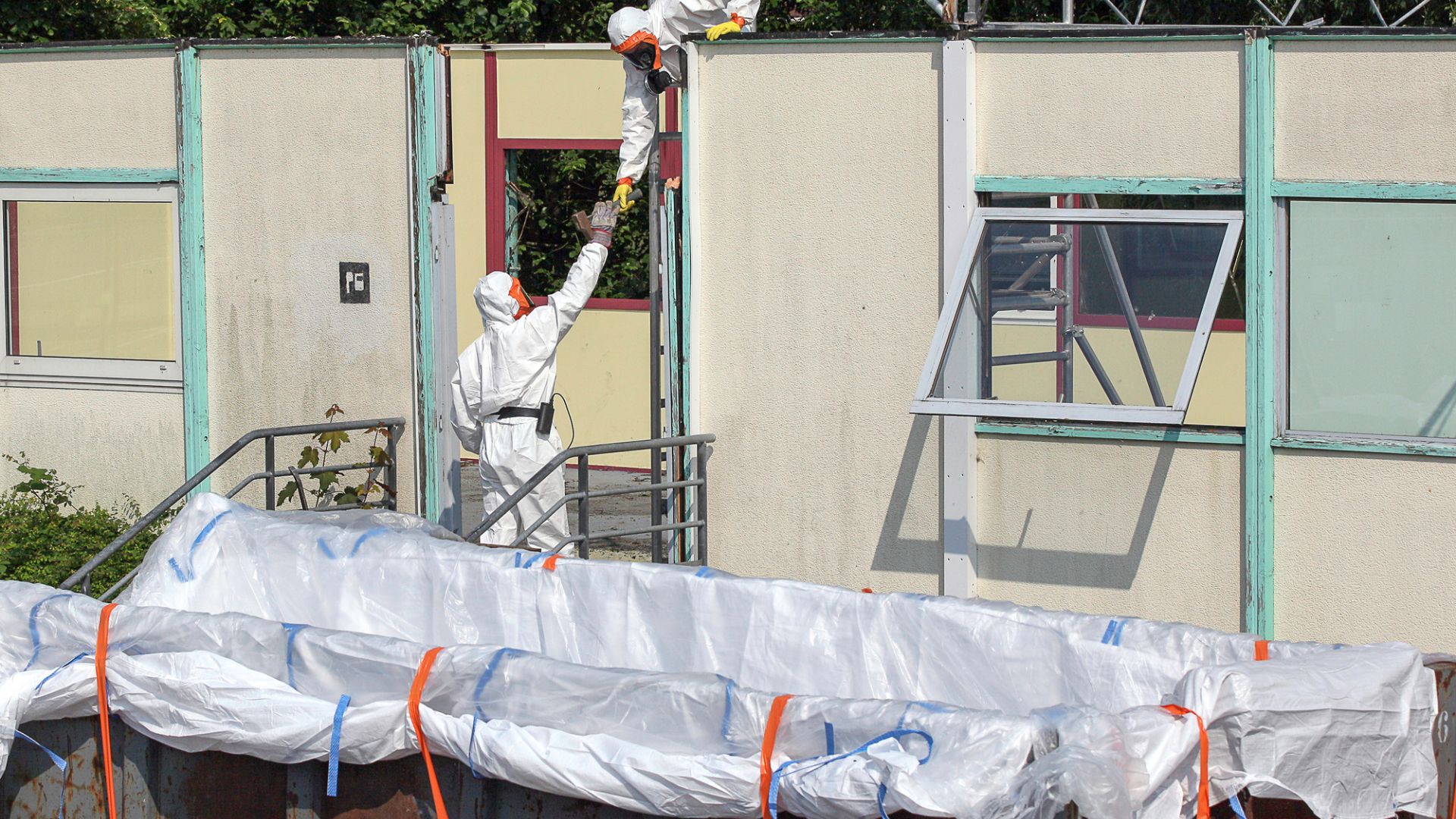Asbestos Management Plan
What is Asbestos?
Regulation 278/05 requires that a management program related to asbestos containing material (ACM) be in place in each workplace. The program includes:
- It is a group of naturally fibrous minerals which is found in metamorphic rock.
- It is non-combustible and has strong fibres.
- It is resistant to many chemicals.
- Primarily used in construction-related industries.

What is an Asbestos Management Program?
Regulation 278/05 requires that a management program related to asbestos containing material (ACM) be in place in each workplace. The program includes:
- an assessment of the presence of ACM;
- a procedure to deal with ACM
- a surveillance schedule on a yearly basis
- an update report every time ACM are removed or encapsulated
- a training program for staff who are directly involved with the removal of asbestos.
- a report on the location and condition of ACM, kept in the workplace and provided upon request to contractors or other persons. Each facility through out RCCDSB has an Asbestos binder.
Note: Each School has an Asbestos Binder available to view–located at the main office.
Types of Asbestos
- Contains more iron and resist acid and extreme temperatures
- Contains brittle, sharp fibres, when inhaled, remains in the lungs longer, causing diseases such as cancer.
- This type of asbestos is now drastically controlled and has been widely replaced.
- In the mid-1980s, asbestos in the amphibole group was banned, including products such as:
Low density insulation board and ceiling tiles.
Cement sheets and pipes for construction.
Casings for water, telecommunication and electrical services
Thermal and chemical insulation , used in products such as fire rated doors.
- Only asbestos mined in Canada.
- Less damaging to the lungs.
- Encased in resin or cement.
- Examplses of Chrysotile include: vinal floor tiles, fire blankets, interior fire doors, adhesives, sheeting and ceiling tiles, plasters, stucco, and caulking etc.
Classifications of Asbestos
- Easily crumbles by hand when dry
- Common examples: many types of plasters, mud or joint compounds, acoustic ceiling tiles, insulation for water heaters and pipes, and was often used to fireproof steel structures.
- Fibres are not easily made airborne
- Usually enclosed or tightly bound in a product.
- Do not pose a significant health risk if left undisturbed.
- Can become friable if heat or water damage is sustained, or exposure to certain chemicals.
- Buildings or structures built prior to the 1970’s are more likely to contain materials.
- Asbestos was primarily used for pipe and boiler insulation.
- May be concealed by modern means of insulation such as fiberglass.
- Fire proofing measures ceased to use as of 1974.




